In contemporary landscape design, the choice of plants is pivotal in creating a space that is both visually striking and harmoniously integrated with modern architectural styles. We are going to discover 25 plants that embody the essence of contemporary gardening, offering sleek forms, intriguing textures, and a cohesive palette that accentuates the minimalist beauty of modern outdoor living.
Architectural Plants for Structure and Focal Points
Agave (Agave spp.)
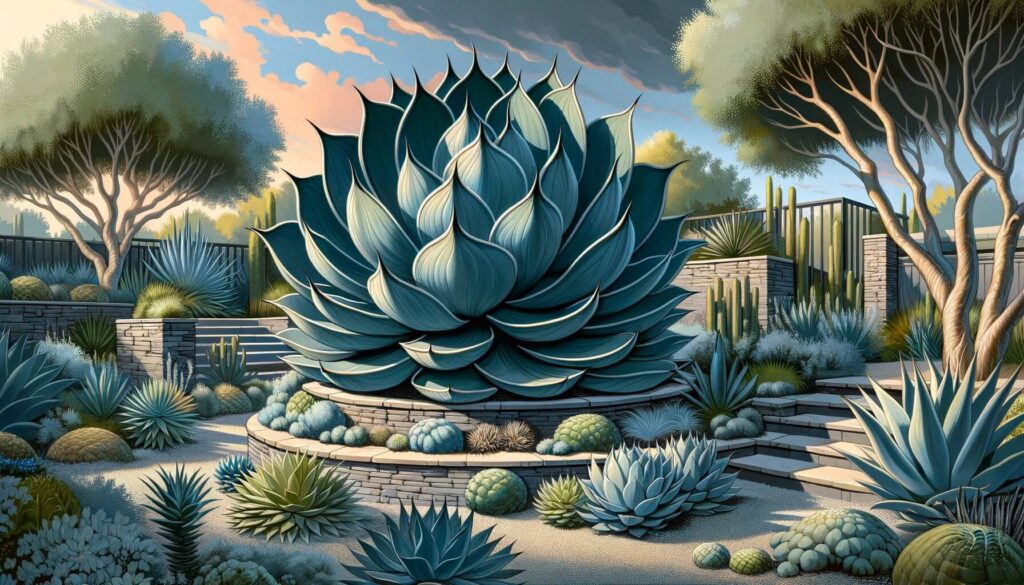
With its sculptural rosettes, agave serves as a stunning focal point, especially in xeriscaped gardens.
Snake Plant (Sansevieria trifasciata)
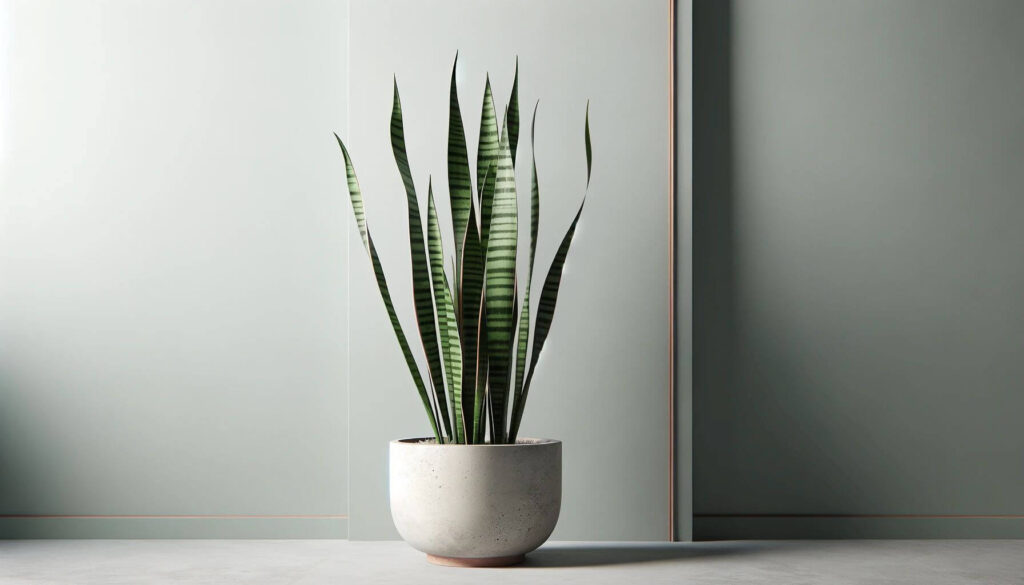
Its upright, sword-like foliage introduces vertical lines and a touch of greenery in minimalist settings of modern snake plant landscape.
Yucca (Yucca spp.)
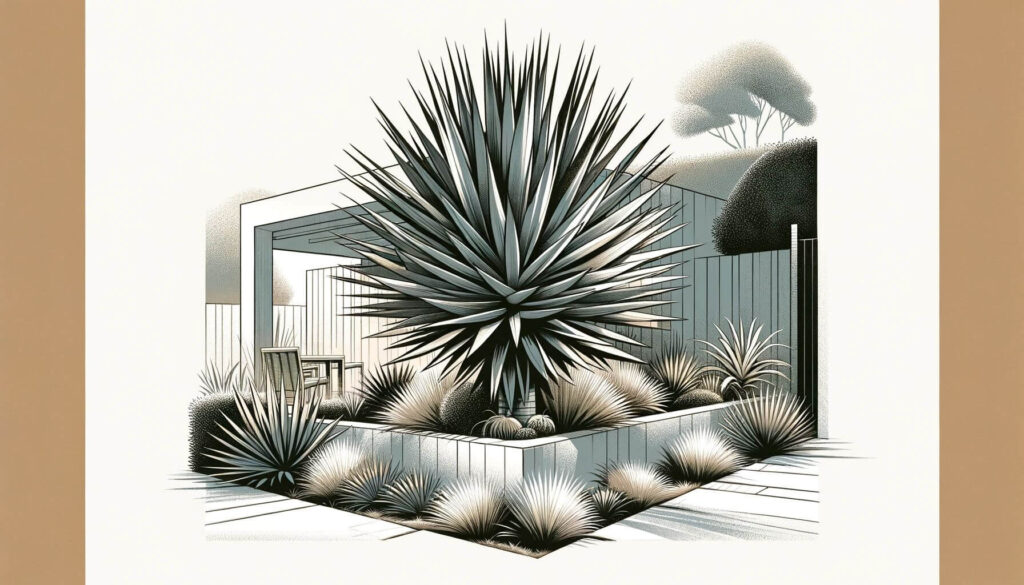
Yucca’s bold forms and spiky leaves add architectural interest and are ideal for low-maintenance gardens.
Canna Lily (Canna spp.)
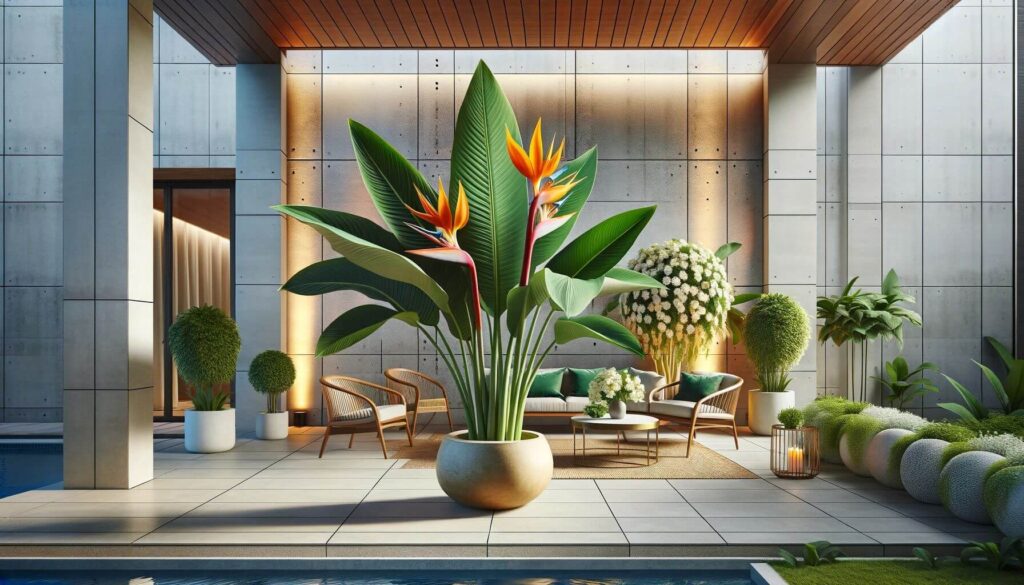
For a touch of tropical flair, canna lilies offer striking leaves and vibrant blooms, perfect for accentuating modern patios.
Bird of Paradise (Strelitzia reginae)

Its exotic flowers and large leaves bring a dramatic presence to contemporary landscapes.
Textural Plants for Depth and Contrast in Contemporary Landscape
Ornamental Grasses (Various spp.)
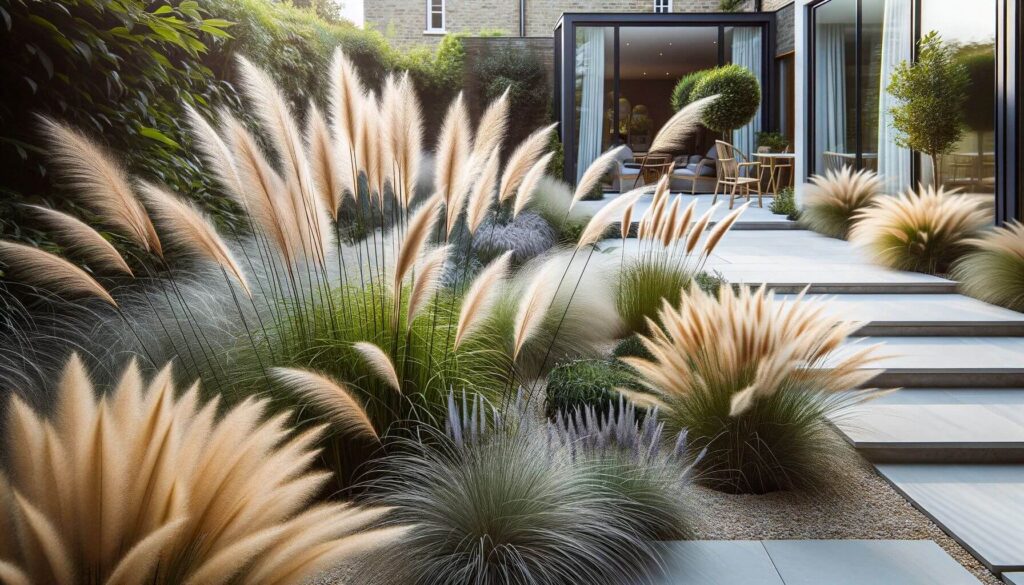
Grasses like feather reed grass (Calamagrostis x acutiflora) add movement and texture, softening the garden’s hard lines.
Lamb’s Ears (Stachys byzantina)
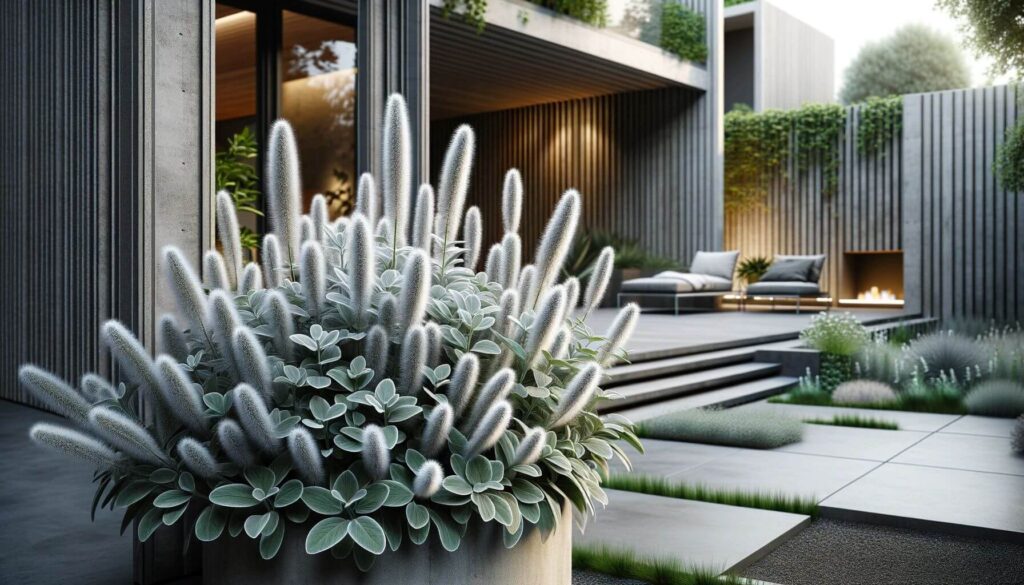
The soft, silvery foliage provides a unique texture, contrasting with sleek, modern materials.
Sedum (Sedum spp.)
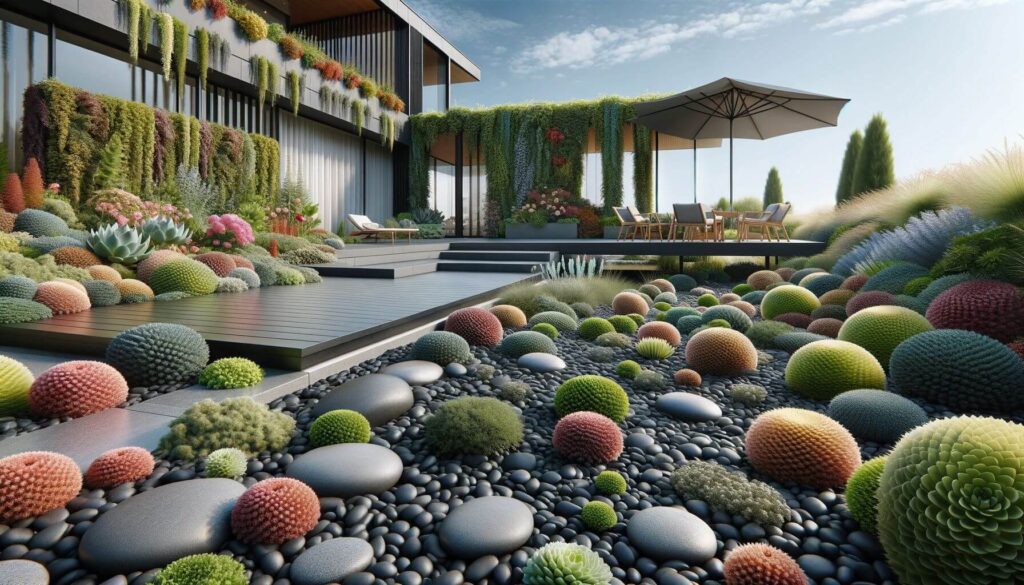
Low-growing sedums introduce ground-level texture and are excellent for green roofs or ground cover.
Horsetail Reed (Equisetum hyemale)
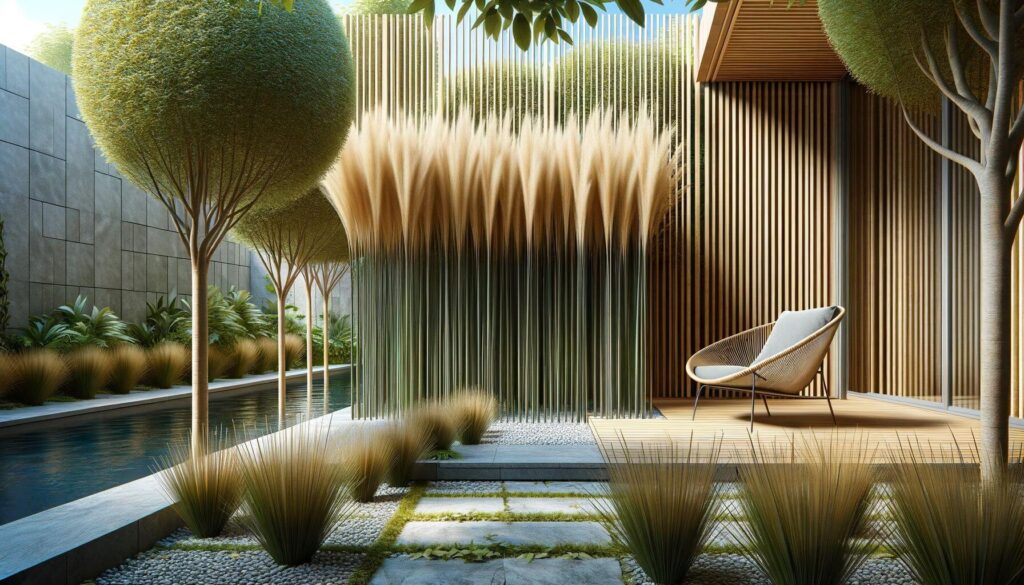
Its rigid, upright stems create a striking linear pattern, ideal for water features or as a privacy screen.
Mondo Grass (Ophiopogon japonicus)
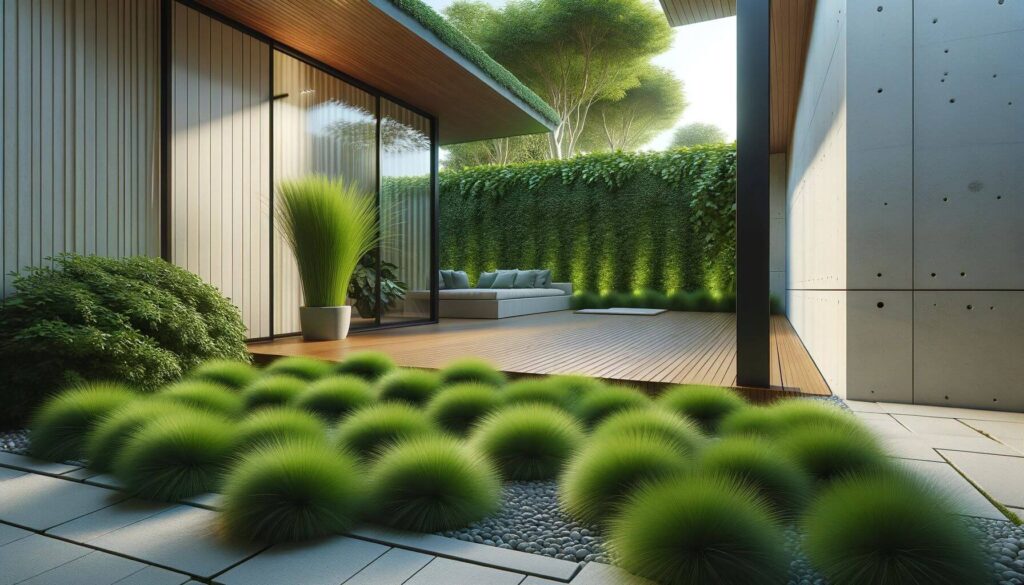
For a minimalist ground cover, mondo grass offers a lush, verdant texture to contemporary gardens.
Colorful Accents for Vibrant Highlights in Contemporary Landscape
Japanese Blood Grass (Imperata cylindrica Rubra)
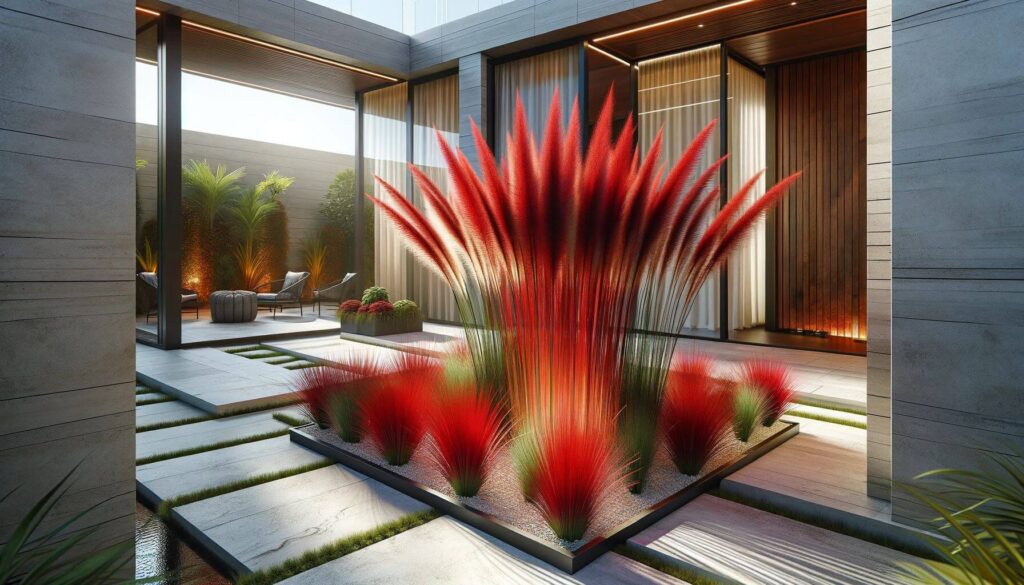
The fiery red tips of this grass add a pop of color and enliven the garden palette.
Coral Bells (Heuchera spp.)

Available in various colors, coral bells’ foliage brings subtle color and texture to shaded areas.
Blue Fescue (Festuca glauca)

Its blue-hued foliage introduces cool tones, complementing modern, neutral landscapes.
Lavender (Lavandula spp.)
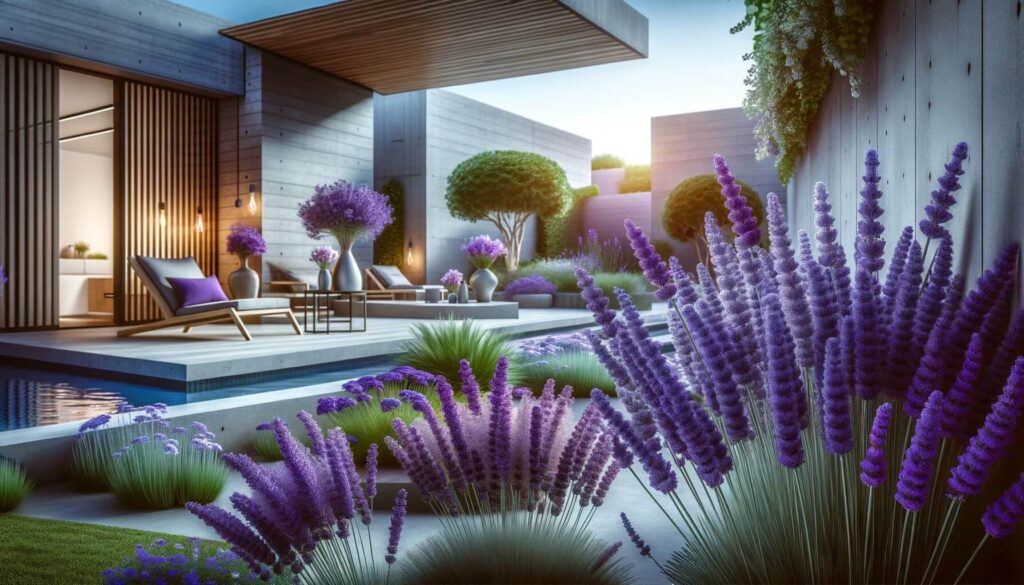
Lavender adds both color and fragrance, enhancing the sensory experience of the garden.
Zebra Grass (Miscanthus sinensis Zebrinus)

With its distinctive horizontal stripes, zebra grass injects pattern and movement.
Evergreens Plants for a Contemporary Landscape for Year-Round Structure
Boxwood (Buxus spp.)
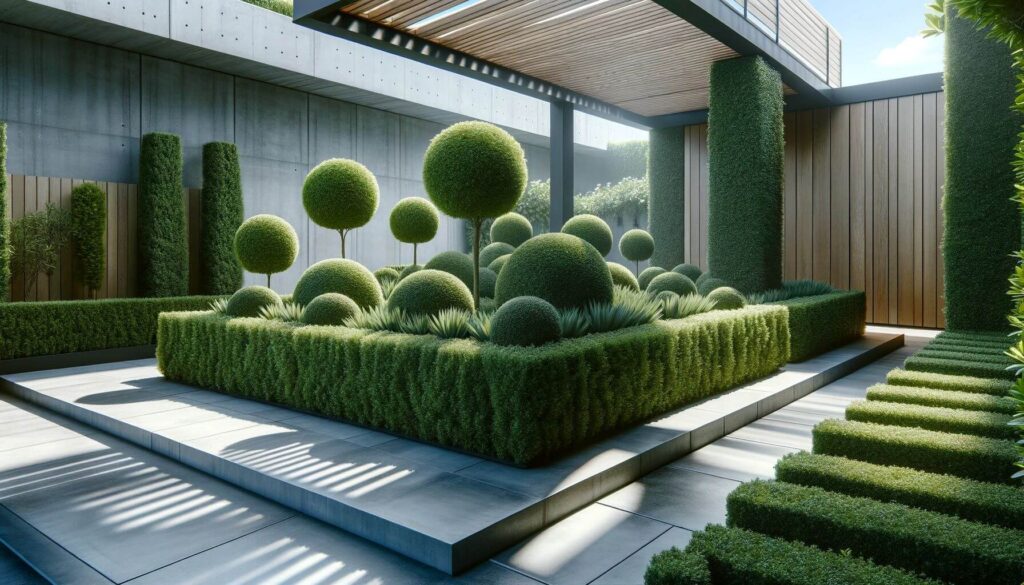
Perfect for formal hedges or geometric shapes, boxwood is a staple in modern garden design.
Arborvitae (Thuja spp.)
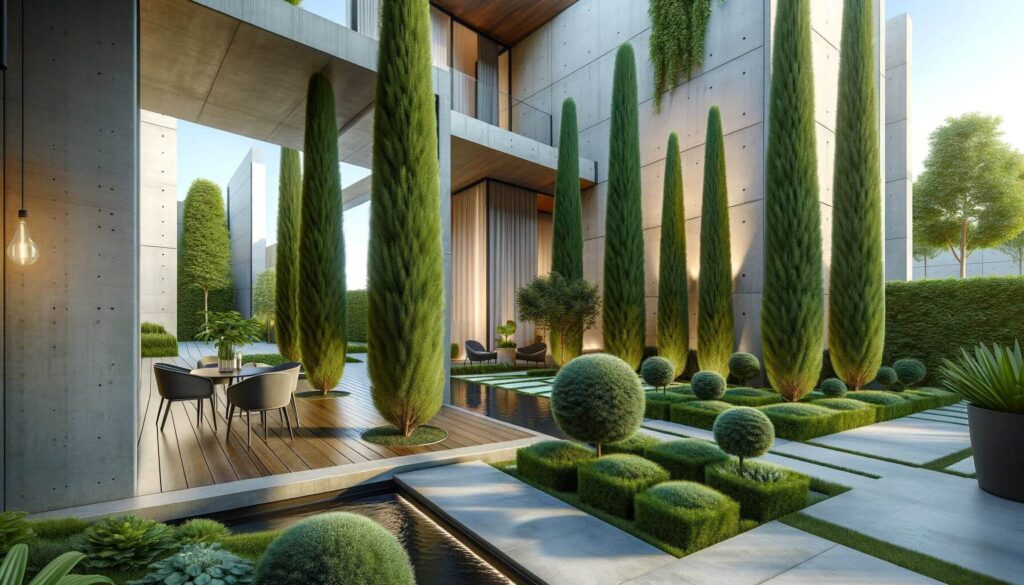
These tall, columnar evergreens are excellent for privacy screens and vertical accents.
Italian Cypress (Cupressus sempervirens)
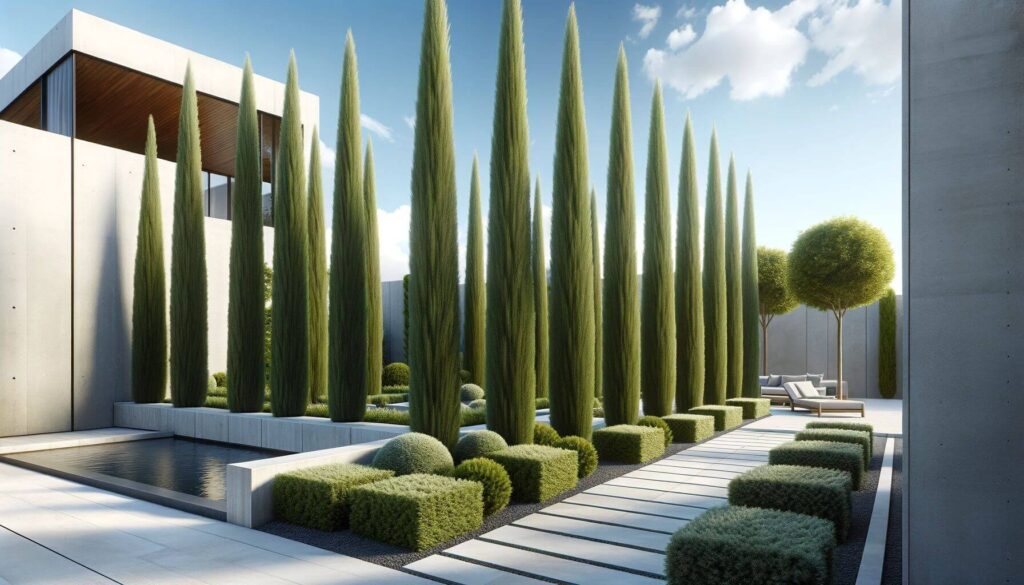
The narrow, upright form of Italian cypress punctuates the landscape, offering a Mediterranean touch.
Dwarf Mugo Pine (Pinus mugo var. pumilio)
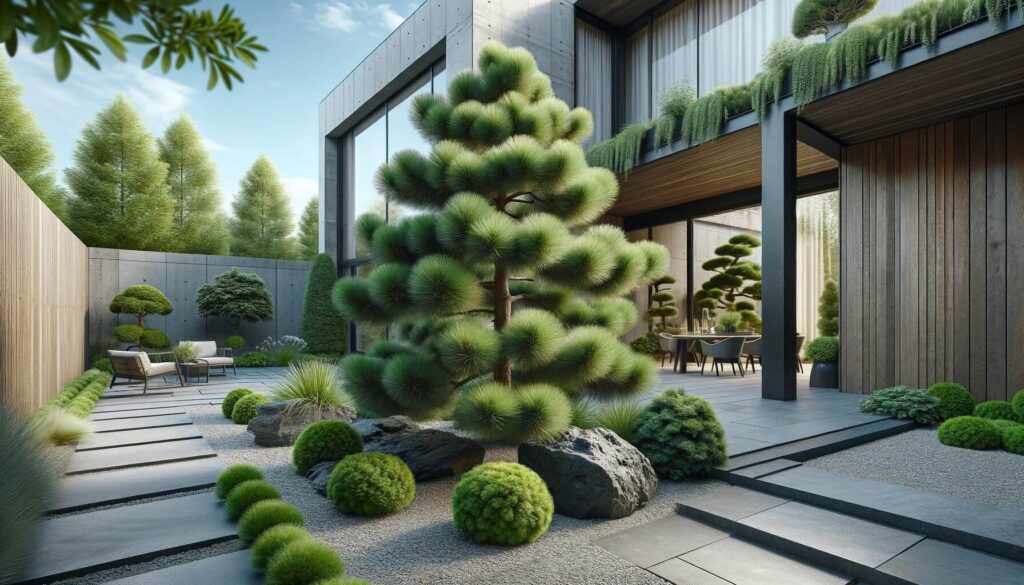
A compact evergreen, mugo pine adds texture and resilience to rock gardens or borders.
Japanese Holly (Ilex crenata)
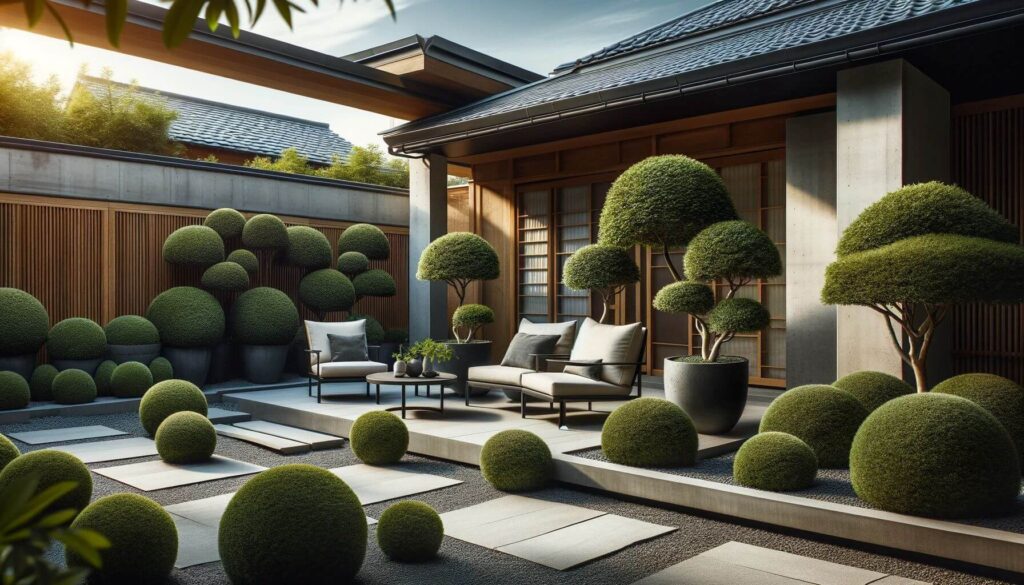
Its small, dark green leaves and tidy habit make it ideal for contemporary topiary forms.
Ground Covers and Low-Maintenance Options
Creeping Thyme (Thymus serpyllum)
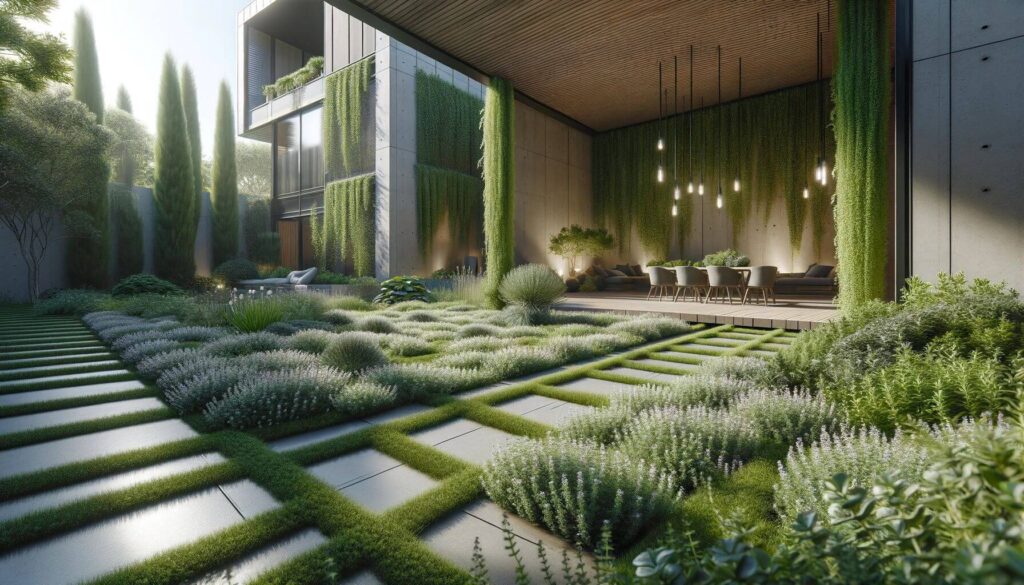
As a fragrant, low-growing ground cover, creeping thyme creates a lush carpet that tolerates foot traffic.
Succulents (Various spp.)
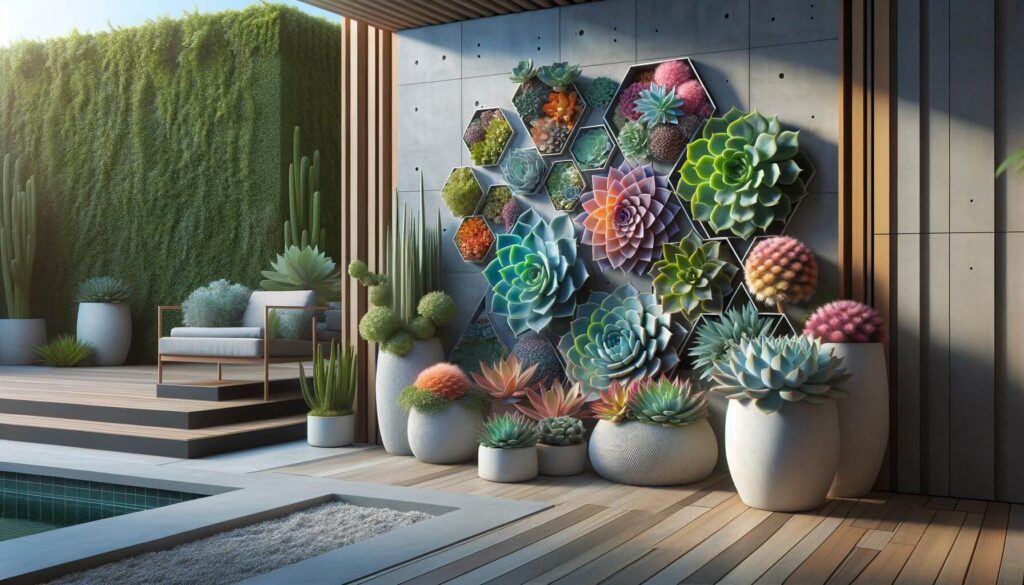
Succulents like Echeveria and Sedum offer drought tolerance and geometric beauty, suitable for modern pots or green walls.
Irish Moss (Sagina subulata)

This moss-like ground cover provides a soft, green base for stepping stones or minimalist gardens.
Dwarf Fountain Grass (Pennisetum alopecuroides Hameln)
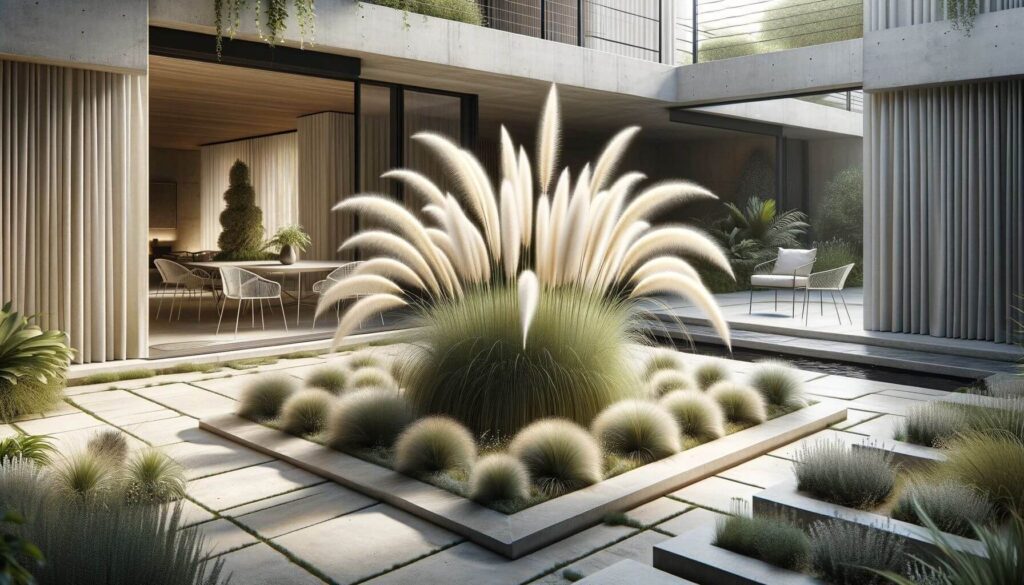
Its graceful, fountain-like form adds elegance and ease to garden borders.
Hens-and-Chicks (Sempervivum spp.)
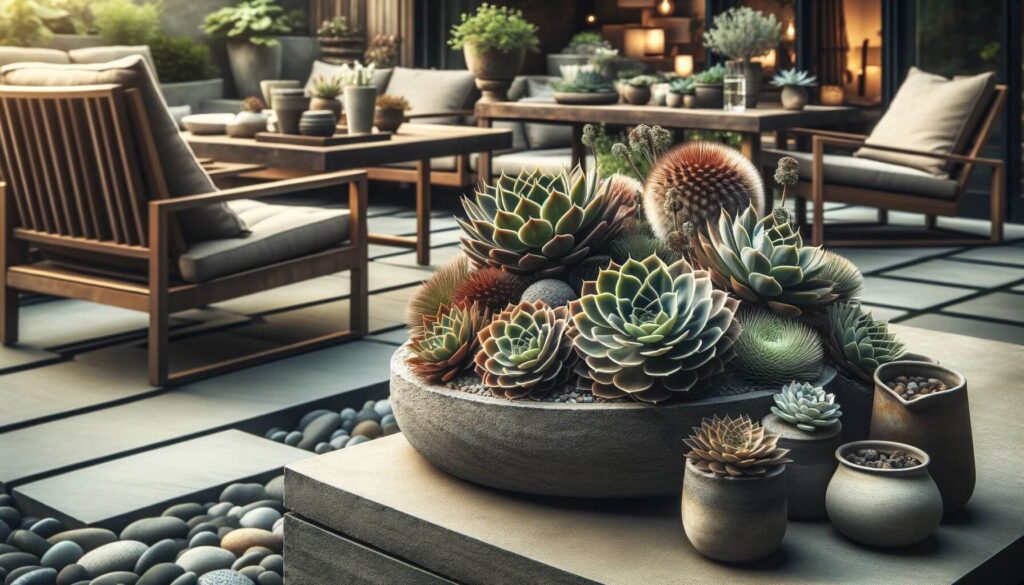
For textural contrast and resilience, hens-and-chicks thrive in rockeries and containers, requiring minimal care.
Incorporating these 25 plants into your contemporary landscape not only enhances the visual appeal but also ensures your garden remains a testament to modern design principles, minimalism, functionality, and harmony with nature. By carefully selecting plants based on their architectural qualities, texture, color, and maintenance needs, you can create an outdoor space that is both sophisticated and sustainable, reflecting the cutting-edge of landscape design.
FAQ Patio Plants For Modern Garden
1. Why are certain plants chosen for contemporary landscapes? Plants in contemporary landscapes are selected for their architectural forms, texture, and ability to fit into a cohesive design scheme that complements modern living spaces.
2. Can these plants be used in any climate? While many plants suitable for contemporary landscapes are versatile, it’s important to choose species that are well-adapted to your local climate and soil conditions.
3. How do I maintain a contemporary garden? Maintenance involves regular pruning to maintain shapes, controlling growth to keep the design minimalist, and ensuring plants receive their required care, such as watering and feeding.
4. Are succulents good for contemporary landscapes? Yes, succulents are popular in contemporary designs due to their geometric shapes and low maintenance requirements.
5. How can I make my contemporary landscape environmentally friendly? Incorporate native plants, use mulch to reduce water evaporation, install a drip irrigation system, and choose plants that require less water.
6. What are some common features in contemporary landscape designs? Features include clean lines, geometric shapes, limited but impactful use of color, and the incorporation of hardscaping elements like stone, gravel, and concrete.
7. How important is lighting in contemporary landscapes? Lighting is crucial for enhancing the design’s aesthetic, highlighting architectural plant features, and extending the use of the outdoor space into the evening.
9. What are the benefits of a contemporary landscape? Benefits include a modern and cohesive outdoor space that complements contemporary architecture, low maintenance requirements, and a tranquil environment conducive to relaxation and entertainment.

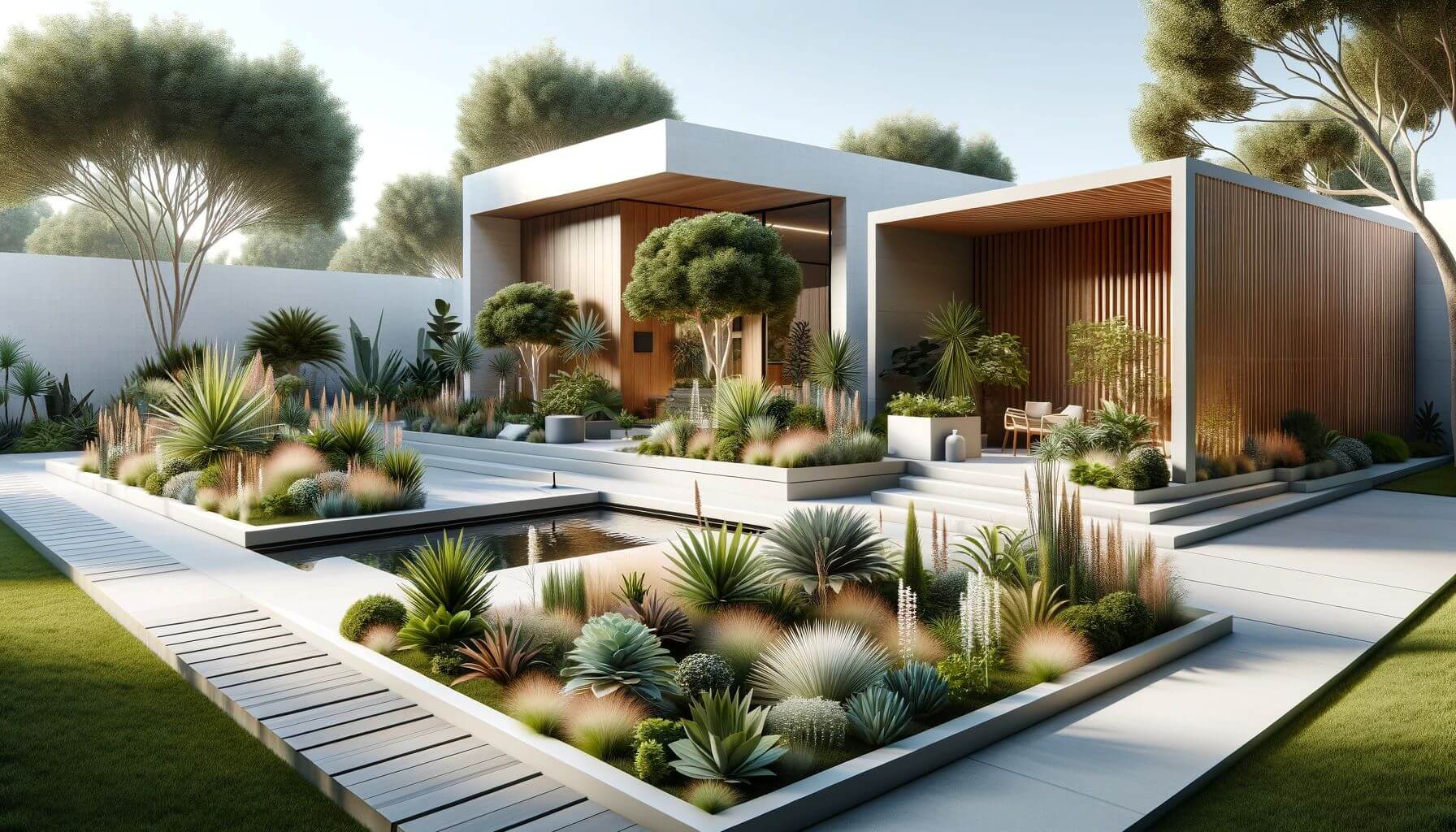
Leave a Reply